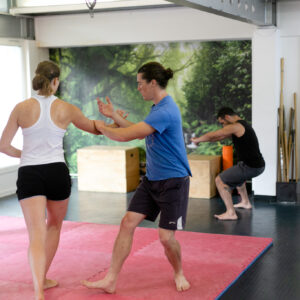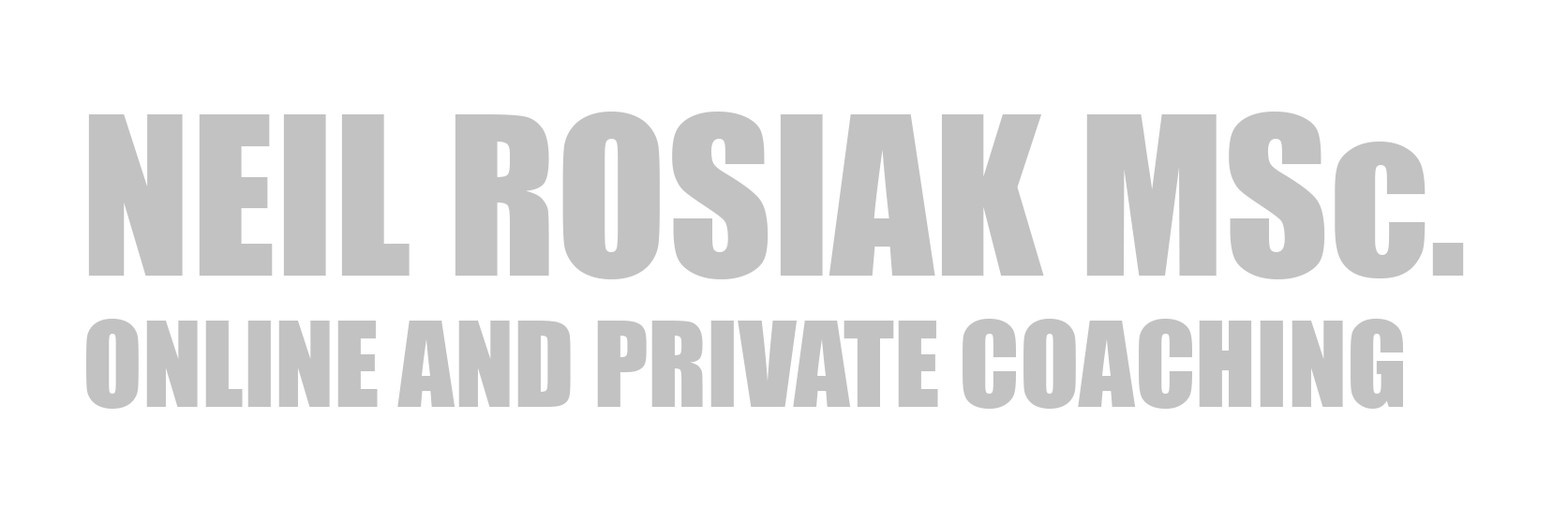An ideal introduction to Tai Chi training for beginners
Tai Chi is an art that can be learned and practiced on a few different levels and in many different ways. There are plenty of styles to choose from and within these styles there are many different instructors, each having their own approach. I’ve been teaching Tai Chi since 1994 and over the years I have developed an approach which gives a new practitioner very solid foundation skills, upon which to build the rest of the art.
As has been said before about the practice of many different crafts and arts, if the foundation is shaky then it will be difficult to build your practice to it’s fullest potential.
Building an ideal Tai Chi foundation
The first step is to identify why you are interested in learning Tai Chi. For some people it’s the cultural and philosophical ideas behind the art that interest them. Many people want to have an interesting way to improve their health and fitness. There are also some people who wish to learn a practical martial art and develop some self defence confidence and ability.
The system of Wudang Tai Chi we practice covers all of these aspects (and more) and is generally regarded as the most complete version of the art. Wudang Tai Chi contains all the original Tai Chi training elements, including its full self defence and combat curriculum. Many people might be put off by this aspect, thinking it’s not why they are interested in learning the art. What you have to always remember however, is that Tai Chi was developed as a practical martial art and its fundamental philosophy is to embrace both Yin and Yang (healing/defence). The self defence training informs and develops many key skills required to advance to higher levels in the other aspects of the art, and vice versa.
As a beginner in Tai Chi, you should approach the art as a study, rather than as an ‘exercise class’. The Tai Chi classics advise students to ‘treasure knowledge’, which means when you learn something in class it’s likely tube an important part of the learning puzzle and you should give it value. The Tai Chi classics also advise students to ‘quietly ponder’ – which mean that everything you learn and practice should be carefully and thoughtfully considered and related to other aspects of the art. Tai Chi is a big art and each little piece of the puzzle links directly to the other aspects.
Learning the essence of Tai Chi theory
The first thing to familiarise yourself with is the basic theory and philosophy that underpins the art. You should understand the key concepts such as Wu Chi, Tai Chi, Qi and so on. In our foundation course we will give you handouts to help with this. Reading some general theory bools is a good idea even at the beginner stage, because the clearer your understanding of key ideas and concepts, the earlier you will integrate them into your practice. And in many ways Tai Chi is philosophical and theoretical ideas and concepts made physical. Other things you should understand include the five elements directional theory and the five step strategy close quarter theory (both in handouts).
As you get into your Tai Chi training it is a good idea to get a couple of different versions of the Tai chi classics, as well as some commented versions. These classical essays are the writings from the original masters of the art, which include all the theory, concepts and ideas upon which the art is practiced.
Qigong exercises and mobility drills
In our beginners course we teach you a wide variety of drills and warm ups from the Wudang syllabus. The ideas of the drills is to give you some simple tools which will enable you to develop body awareness, feel, movement skill and coordination. They will also loosen all the major joints and muscle as well as gently warming up the core temperature of the body. In our beginners course the first drills you will learn are;
Embrace tigers head
This exercise develops waist flexibility, mobilises the spine and shoulders and develops good posture.
Retrieving the moon from the sea
This exercise strengthens the legs and core as well as stretching the front of the body and hips. It also mobilises the spine and shoulders.
Sweep lotus leg
This exericse stretches the legs in a fluid and dynamic way, also building up timing.
Seven stars
This exercise builds strength in the legs and shoulders, whilst developing awareness of alignment.
Cloud hands
This exercise trains the stance, the waist and the shoulders, whilst building hand/eye coordination
As if shutting a door
This drill builds awareness and skill in developing a good front stance and sitting stance. It also strengthens the core and shoulders and teaches the expression of full body force.
Mastering technique and posture with the square form.
When you start learning Tai Chi in the Wudang style of Tai Chi we will first begin our forms training with the square method of practice. The form you will learn is the traditional Wudang long form, which has 119 techniques. In the square form each of the techniques is broken down into smaller chunks and postures, making it easier to learn, memorise and refine. There are very specific start and end points to the moves and the postures can be learned in an extremely precise way.
By practicing the square form you will develop perfect stances, leg and foot control. You will develop spinal and trunk awareness and become able to develop the optimal Tai Chi posture. Shoulder and arm alignment can easily be corrected and optimise, leading to perfect shapes which will help in the more martial aspects of the art.
The square form will strengthen the entire body and give you a boost in fitness and stamina. It will refine your coordination, body control and movement skills. You will also learn how to breath more harmoniously and learn the Tai Chi method of relaxation and being ‘song/loose’.
Partner training with pushing hands
A very important part of traditional Tai Chi training is pushing hands. It is the close quarter, sensitivity based partner training which conditions your responses to income force and also makes your ‘outgoing’ issuing of force completely automatic. In many ways self defence is a series of automatic responses to ‘questions’ supplied by your attacker. If the answer isn’t a good one you will be overcome.

The first exercise we teach you as a beginner, is the four directions drill. This exercise is taught at the square level and also a more fluid and circular round level. The objective of the practice of this exercise is to develop rock solid stances for both issuing force and receiving force on the back foot. It also develops your ability to issue force using the power of your whole body, waist/core and correct shoulder and arm alignment. It also conditions your subconscious response to receiving force, so that you always use the absolute minimum amount of force to do so, and incorporate the use of yielding, deflection and whole body movement.
As you develop we introduce the round method of practice, where all your movement become entirely circular and the changes of yin and yang (attack and defence) are completely seamless with no breaks whatsoever. This conditions the foundation Tai Chi concept of ‘continuity’. There are also spontaneous ‘change’ methods we teach you where you learn to spontaneously follow the opponent, another key tenet of Tai Chi as a martial art. The idea is that your body and mind learn to respond to events and moments exactly as they are, rather than how you would like them to be. ‘Following’ and ‘spontaneity’ are essential concepts to understand if you want to develop your skills beyond beginner level.
Mastering the fundamental Tai Chi self defence techniques
Tai Chi self defence training for beginners should concentrate on training and refining skills and abilities in a few key ‘applications’. Applications are the practical usage of the movements of the form as well as a few that aren’t in the form.
The process generally begins by one persona adopting the role of an attacker, whilst the other plays the defence. The attacker gives a simulated attack (punch, kick etc) whilst the defender uses a Tai Chi technique to defend agains the attack and then counter the opponent.
For beginners it has to start very slowly. The practices should be done very carefully so that there is minimal risk of injury. Correct movements, use of footwork, evasion, deflection and so on should be carefully practiced. Then the counterattacks can also be refined and developed in the same way, building up accuracy and potency. As a beginner it will take a fair bit of time spent with each of the core applications to build up any real skill or ability with it.
As you reach more advanced levels you should be easily able to defeat any of your training partners attacks, using minimal force to defend and then to counter attack them decisively and potently. At advanced levels of training your partner can attack at full speed and power and it will be easy for you to deal with them in a relaxed and comfortable way, using good Tai Chi technique. Eventually once a good range of applications have been practiced in this manner you will be able to spontaneously respond to any attack in an instinctive, subconscious way.
The self defence drills we teach beginners
Grasping the birds tail: This exercise teaches you how to easily neutralise swinging attack, which are very common in self defence. The drill also teaches you how to control an opponent so as not to hurt them, or to simultaneously strike them in a decisive way if the situation is more serious.
Parry and punch: this exercise teaches you how to easily deflect and/or evade straight line attacks and then counter your opponent with a powerful and direct straight punch counter
Step back to beat the tiger: This drill is a little more challenging from a technical perspective but will teach you how to ‘borrow’ the opponents aggression and force and use it against them.
Brush knee twist step: This is a highly efficient response to an opponents liking attack which uses yielding and footwork to neutralise the opponents power. It then implements a full bodied counter attack to decisively subdue them
Our Tai Chi beginners course starts on the first Monday of every month
Course sessions run each Monday from 6.30 to 8pm in Camden Town, London
10 week course costs £100
Drop us a message using the form below to register your interest.[/vc_column_text][/vc_column][/vc_row][vc_row][vc_column]




